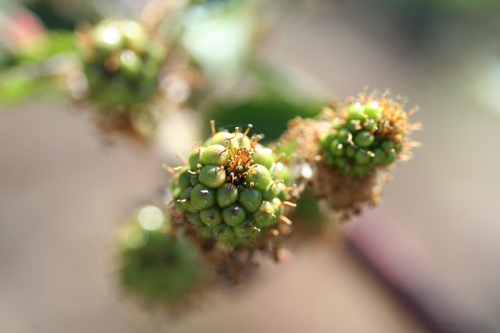Pollination, an important part of the plant reproductive process, is the process by which pollen grains are transmitted from male plant parts to female plant parts before fertilization.
While the basic process of pollination is the same across all plants, pollination may occur in different ways for different plants. Self-pollination is the transfer of pollen from male to female parts of the same flower, or to another flower on the same plant. This differs from cross-pollination, the transfer of pollen from one plant to a separate plant of the same species.
This article will help you answer the question: are strawberries and blackberries self-pollinating?
Background information: What Is Pollination?
Table of Contents
Are Strawberries Self-Pollinating?

Strawberries originated in Europe, where they have been cultivated since medieval times both for food and medicinal purposes. Today, strawberries are one of the world’s most well-known and in-demand fruits, with a total global production of more than 8 million tons every year. As pollinators’ populations continue to decline, many flowering plants are negatively affected, reducing their chances of reproduction. However, strawberries are self-pollinating, so they are not as dependent on pollinators as some other types of plants. Here’s how strawberries self-pollinate.
Strawberry Self-Pollination

Strawberries are self-pollinating plants, meaning they can pollinate themselves by transferring pollen grains from the male part of the flower to the female part. Strawberry flowers are hermaphrodites, meaning each flower has both male parts and female parts. The stigmas (part of the female pistil) is located at the center of the bloom, closely surrounded by the anthers (part of the male stamen). This structure allows pollen grains from the anther to fall into the stigma without the help of pollinators.

In order to develop a fully shaped strawberry, every pistil in the center of the flower must receive pollen. After the fertilization process, each pistil is developed into an achene, the seeds you see all over the strawberry. These seeds are the actual fruit of the strawberry, while the red flavorful berry that we eat is actually a developed stem that holds the pistil, also known as a receptacle.
When the anther fails to deliver pollen to every pistil in the flower, strawberries may become underdeveloped or deformed. This is why, although strawberries can pollinate themselves, the support of pollinators, such as bees, butterflies, and other insects is still very important, as animal pollination can increase the probability of complete pollination. Complete pollination can improve the yields and quality of strawberries.

Source: John Strang, University of Kentucky
Are Blackberries Self-Pollinating?

Although the exact origin of blackberries is unknown, people around the world have been utilizing them for thousands of years. For example, Ancient Romans used blackberries for medicinal purposes, while American Indian tribes used them for dyes. Blackberries are now widely cultivated and produced globally. In 2017, blackberry production in the United States alone surpassed $30 million. Despite their capacity to self-pollinate, blackberries rely on pollinators for efficient pollination. Here’s how blackberries pollinate.
Blackberry Pollination
Blackberries are capable of self-pollination as their flowers include both male and female parts. However, unlike strawberries, blackberries show inconsistency in self-pollination. Most of the time, blackberries require the support of pollinators, such as bees, butterflies, birds, and even wind to deliver a sufficient amount of pollen for proper fertilization and fruit growth.


The pistils in the blackberry flower must receive enough pollen to produce a perfectly shaped blackberry. After the fertilization process, the flower will develop drupelets, or the bubble-like fleshy outer part of the blackberry (each drupe has a seed inside). Like the achene on strawberries, the drupelets of blackberries are also attached to a receptacle. This is the white fleshy center of blackberry fruit.
Blackberries are also prone to deformities when pollination is incomplete. This is why blackberry farmers often plant more blackberry plants next to each other in order to attract more pollinators, increasing the chances of complete pollination while also boosting the quality and quantity of blackberry crops by promoting cross-pollination.

Source: University of California
Read more: What Plants Do Bees Pollinate?

